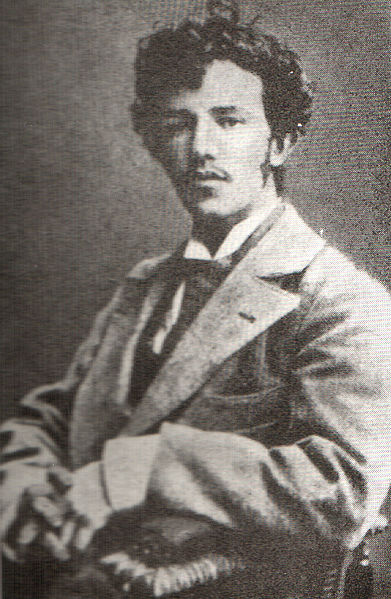Background
Murashko was born in Kiev, Ukraine, on August 26, 1875. His stepfather, Oleksandr Ivanovych Murashko, had an icon-painting workshop and he also worked on the interior of St Volodymyr's Cathedral.

1895
Oleksandr Murashko in 1895.
Saint Petersburg, Russian Federation
Oleksandr Murashko studied at the Imperial Academy of Arts (now Ilya Repin St. Petersburg State Academic Institute for Painting, Sculpture, and Architecture) in St Petersburg, graduating in 1900.
Munich, Germany
Murashko attended the Academy of Fine Arts, Munich.
Vorovs'koho str. 20, Kyiv, Kyivs'ka, Ukraine, 01054
Murashko was a co-founder of the National Academy of Arts of Ukraine in 1917 and held the posts of a professor and rector.
Mykola and Oleksandr Murashko.
Oleksandr Murashko.
Oleksandr Murashko.
Portrait of Oleksandr Murashko.










Murashko was born in Kiev, Ukraine, on August 26, 1875. His stepfather, Oleksandr Ivanovych Murashko, had an icon-painting workshop and he also worked on the interior of St Volodymyr's Cathedral.
Oleksandr Murashko studied at the Kiev Drawing School from 1891 to 1894. In 1894, with recommendations from several prominent artists, he entered the Imperial Academy of Arts (now Ilya Repin St. Petersburg State Academic Institute for Painting, Sculpture, and Architecture) in St Petersburg. There he studied under Ilya Repin, graduating in 1900. The artist was awarded the Academy’s gold medal in 1900 for his diploma painting Burial of a Kish Otaman. As part of the prize, Murashko was sent to study in Paris between 1902 and 1904; later he also studied at the Munich Academy of Arts.
Murashko participated in the New Society of Artists annual exhibitions in Saint Petersburg between 1904 and 1914. In 1907 the artist settled in Kiev, where he taught painting at the Kiev Art School from 1909 to 1912. In 1909 he exhibited his canvases in Paris, Amsterdam, and at the international exhibition in Munich. In 1910 two of his artworks, Sunday: Quiet Sadness (1909) and On a Terrace (1906), were presented at the international exhibition in Venice. The same year he had solo exhibitions in Berlin, Köln, and Düsseldorf. Starting from 1911 he exhibited with the Munich Sezession group.
In 1913 he managed to open his own studio. In 1916 Oleksandr Murashko became a founding member of the Kyiv Society of Artists. He was a co-founder of the Ukrainian State Academy of Arts in 1917 and held the posts of a professor and rector.
Murashko's style gradually developed from the Realism of the Peredvizhniki school into a vivid, colourful Impressionism. His paintings and portraits were praised by critics for their psychological depth. His well known works include, Girl with a Red Hat (1902-1903), portraits of Hryhorii Tsyss (late 1890s), T. Yazera (1901-1904), Jan Stanisławski (1906), Day at Rest (1911), Peasant Family (1914), Washerwoman (1914), and Woman with Nasturtiums (1918).

Oleksandr Murashko established an international reputation and had a great impact on the development of Ukrainian portraiture in the 20th century. He has been called "the most important Ukrainian artist of the turn of the century."
His painting Carousel won the gold medal at the international exhibition in Munich in 1909. Murashko exhibited his works in numerous European galleries and museums, including those in Amsterdam, Venice, Rome, Berlin, Cologne, and Düsseldorf.
Girl in a Red Hat
Portrait of Elena Prahova
Peasant Family
Georgy Schleifer
The Annunciation
Portrait of Leon Benois
Adrian Prakhov
Laundress
Tatyana
Sketch for the Painting Carousel
Portrait of Margaryta Murashko
Woman with Flowers
The Woman in Black
Olga Prakhova in Masquerade Dress
Portrait of Mykola Petrov
Carousel
Portrait of Liudmila Kuksina
Flower Sellers
Near a Cafe
Self Portrait
Old Teacher. Portrait of Mykola Murashko
Girl at a Table
Winter
Self Portrait
Burial of a Kish Otaman
Portrait of Jan Stanislawski
By the Pond. Portrait of Margaryta Murashko
At the Skating Rink
The Funeral
Girl
Girl in a Pink Blouse
Oleksandr Murashko was a patriotic Ukrainian.
Murashko was one of the adherents of the "Young Muse", a movement started in 1906 by Modernists, whose main aim was to make Ukrainian art more progressive.
Murashko belonged to the New Society of Artists in Saint Petersburg. In 1916 he joined the Peredvizhniki society.

